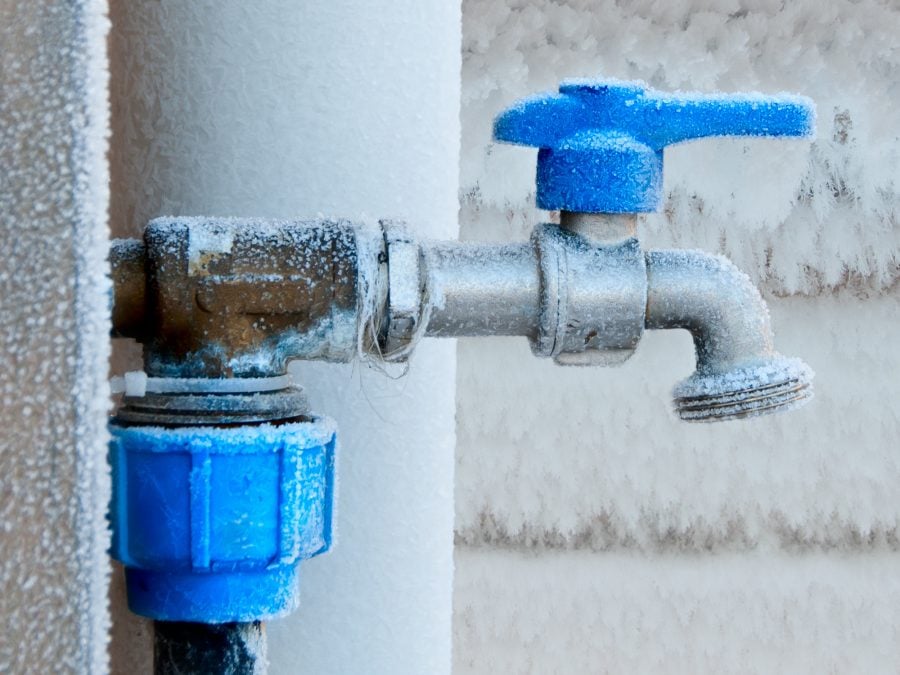We've stumbled upon this great article about 6 Ways to Prevent Frozen Pipes directly below on the web and figured it made perfect sense to talk about it with you on my blog.

Winter can damage your pipes, especially by freezing pipelines. Here's exactly how to stop it from occurring and what to do if it does.
Intro
As temperature levels drop, the risk of frozen pipes boosts, possibly leading to costly repair work and water damage. Understanding just how to avoid frozen pipelines is vital for house owners in cold climates.
Recognizing Icy Pipelines
What causes pipelines to freeze?
Pipelines ice up when subjected to temperatures listed below 32 ° F (0 ° C) for prolonged periods. As water inside the pipelines ices up, it broadens, taxing the pipe walls and potentially causing them to break.
Risks and damages
Frozen pipes can lead to supply of water disruptions, residential property damages, and expensive fixings. Ruptured pipelines can flood homes and trigger considerable architectural damages.
Signs of Frozen Piping
Determining icy pipes early can prevent them from bursting.
How to identify frozen pipes
Search for decreased water flow from taps, uncommon odors or noises from pipelines, and noticeable frost on subjected pipes.
Prevention Tips
Insulating vulnerable pipelines
Wrap pipes in insulation sleeves or use warm tape to shield them from freezing temperatures. Concentrate on pipes in unheated or exterior locations of the home.
Home heating strategies
Maintain interior areas properly heated, especially areas with plumbing. Open closet doors to permit cozy air to distribute around pipes under sinks.
Protecting Outdoor Pipes
Garden hoses and exterior faucets
Separate and drain pipes garden tubes before winter season. Install frost-proof spigots or cover outdoor taps with protected caps.
What to Do If Your Pipelines Freeze
Immediate activities to take
If you suspect icy pipelines, keep faucets open to eliminate stress as the ice melts. Utilize a hairdryer or towels taken in hot water to thaw pipelines gradually.
Long-Term Solutions
Structural adjustments
Take into consideration rerouting pipes far from outside walls or unheated areas. Include additional insulation to attic rooms, basements, and crawl spaces.
Updating insulation
Buy high-grade insulation for pipelines, attic rooms, and walls. Appropriate insulation assists preserve consistent temperature levels and minimizes the risk of icy pipes.
Conclusion
Avoiding frozen pipelines needs positive actions and quick responses. By recognizing the causes, indications, and safety nets, property owners can shield their plumbing during winter.
5 Ways to Prevent Frozen Pipes
Drain Outdoor Faucets and Disconnect Hoses
First, close the shut-off valve that controls the flow of water in the pipe to your outdoor faucet. Then, head outside to disconnect and drain your hose and open the outdoor faucet to allow the water to completely drain out of the line. Turn off the faucet when done. Finally, head back to the shut-off valve and drain the remaining water inside the pipe into a bucket or container. Additionally, if you have a home irrigation system, you should consider hiring an expert to clear the system of water each year.
Insulate Pipes
One of the best and most cost-effective methods for preventing frozen water pipes is to wrap your pipes with insulation. This is especially important for areas in your home that aren’t exposed to heat, such as an attic. We suggest using foam sleeves, which can typically be found at your local hardware store.
Keep Heat Running at 65
Your pipes are located inside your walls, and the temperature there is much colder than the rest of the house. To prevent your pipes from freezing, The Insurance Information Institute suggests that you keep your home heated to at least 65 degrees, even when traveling. You may want to invest in smart devices that can keep an eye on the temperature in your home while you’re away.
Leave Water Dripping
Moving water — even a small trickle — can prevent ice from forming inside your pipes. When freezing temps are imminent, start a drip of water from all faucets that serve exposed pipes. Leaving a few faucets running will also help relieve pressure inside the pipes and help prevent a rupture if the water inside freezes.
Open Cupboard Doors
Warm your kitchen and bathroom pipes by opening cupboards and vanities. You should also leave your interior doors ajar to help warm air circulate evenly throughout your home.

Do you enjoy more info about Preventing and dealing with frozen pipes? Give a short review further down. We'd be happy to find out your thinking about this post. We hope that you come back again in the future. Appreciated our write up? Please quickly share it. Let other people discover it. I truly appreciate reading our article about Prevent Frozen Pipes .
Call Today
Comments on “Preventing Pipes from Cold Weather: Top Strategies”